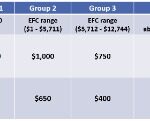Periodic Inventory System
Determining the proper inventory accounting method for your business is a crucial step to financial success. At the end of the day, you’ll have to decide what will work best for your needs. The total in purchases account is added to the beginning balance of the inventory to compute the cost of goods available What Is The Periodic Inventory System? for sale. In a perpetual LIFO system, the company also uses the running ledger tally for purchases and sales, but they sell the inventory that they last purchased before moving to older inventory. In other words, the cost of what they sell is the same as what they most recently paid for that inventory.
What is FIFO vs periodic inventory system?
Under FIFO, it is assumed that items purchased first are sold first. Under LIFO, it is assumed that items purchased last are sold first. Perpetual inventory system updates inventory accounts after each purchase or sale. Periodic inventory system records inventory purchase or sale in "Purchases" account.
After a physical inventory count, the company determines the value of its inventory is $400,000 on March 31. COGS for the first quarter of the year is $350,000 ($500,000 beginning + $250,000 https://kelleysbookkeeping.com/beginning-inventory-definition/ purchases – $400,000 ending). A perpetual inventory tracking system records adjustments to inventory balances after every transaction through point-of-sale inventory systems.
What Is the Cost of Sales?
Regardless of the type of inventory control process you choose, decision makers need the right tools in place so they can manage their inventory effectively. NetSuite offers a suite of native tools for tracking inventory in multiple locations, determining reorder points and managing safety stock and cycle counts. Find the right balance between demand and supply across your entire organization with the demand planning and distribution requirements planning features. Under a periodic review inventory system, the accounting practices are different than with a perpetual review system. To calculate the amount at the end of the year for periodic inventory, the company performs a physical count of stock.

The physical inventory count is easy to complete, small businesses can estimate the cost of goods sold figures for temporary periods. A periodic inventory system is a form of inventory valuation where the inventory account is updated at the end of an accounting period rather than after every sale and purchase. In a perpetual weighted average calculation, the company keeps a running tally of the purchases, sales and unit costs. The software recalculates the unit cost after every purchase, showing the current balance of units in stock and the average of their prices. See the same activities from the FIFO and LIFO cards above in the weighted average card below.
What Is a Periodic Inventory System? Key Considerations
We touched on perpetual inventory above, but let’s take a closer look before we start wrapping things up. Understanding the difference between the two systems can help you figure out which method works best for your business. Advisory services provided by Carbon Collective Investment LLC (“Carbon Collective“), an SEC-registered investment adviser. Go a level deeper with us and investigate the potential impacts of climate change on investments like your retirement account. This calculation does not include damaged goods, lost goods, broken goods, and returned goods. That’s why you should always report missing, broken, or returned goods as soon as you encounter them for inventory precaution.
What are the Trends of Oil Inventory Management System in 2023 … – Scene for Dummies: Everything Hollywood Undead
What are the Trends of Oil Inventory Management System in 2023 ….
Posted: Fri, 26 May 2023 03:41:25 GMT [source]
Maintaining physical inventories can be expensive and time-consuming. Thus, you need a periodic inventory system to track your inventory management. The method allows a business to track its beginning inventory and ending inventory within an accounting period. The example below has the same activities as above, except the company tracks each unit individually and what it purchased. Then, it performs a detailed physical inventory, reporting back each unit sold by the date the purchase was made.
Determine Purchases
A periodic inventory system measures the level of inventory and cost of goods sold through occasional physical counts. In contrast, the perpetual inventory system is a method that continuously monitors a business’s inventory balance by automatically updating inventory records after each sale or purchase. An advantage of the periodic inventory system is that there is no need to have separate accounting for raw materials, work in progress, and finished goods inventory. Only when the accounting period ends, and a physical inventory count is made, does the value of purchases need to be known.
What is a periodic inventory system provide examples?
Physical counts may be conducted monthly, quarterly, or annually depending on the business. A periodic inventory system allows businesses to track inventory levels and costs. For example, adding the beginning balance of inventory to the cost of inventory purchases calculates the cost of goods for sale.
In some respects this simplifies the accounting system and helps to reduce inventory tracking costs. The term periodic inventory system refers to a method of inventory valuation for financial reporting purposes in which a physical count of the inventory is performed at specific intervals. It is both easier to implement and cost-effective by companies that use it, which are usually small businesses. Periodic inventory can also be more prone to human error as it relies on physical inventory audits rather than a more automated system that’s tracked digitally. By the time a physical count is completed, there may be inventory reconciliations needed to address stock discrepancies.

